Abstract
Objectives
During the coronavirus disease 2019 (COVID-19) pandemic, countries around the world framed specific laws and imposed varying degrees of lockdowns to ensure the maintenance of physical distancing. Understanding changes in temporal and spatial mobility patterns may provide insights into the dynamics of this infectious disease. Therefore, we assessed the efficacy of lockdown measures in 16 countries worldwide by analyzing the relationship between community mobility patterns and the doubling time of COVID-19.
Methods
We performed a retrospective record-based analysis of population-level data on the doubling time for COVID-19 and community mobility. The doubling time for COVID-19 was calculated based on the laboratory-confirmed cases reported daily over the study period (from February 15 to May 2, 2020). Principal component analysis (PCA) of six mobility pattern-related variables was conducted. To explain the magnitude of the effect of mobility on the doubling time, a finite linear distributed lag model was fitted. The k-means clustering approach was employed to identify countries with similar patterns in the significant co-efficient of the mobility index, with the optimal number of clusters derived using Elbow’s method.
The core of coronavirus disease 2019 (COVID-19) pandemic management is primary prevention utilizing non-pharmacological interventions (NPIs). NPIs include physical distancing, hand hygiene, cough etiquettes, and personal protection equipment such as face masks, as well as the early detection and isolation of infected patients, robust contact tracing, and effective quarantining [1]. Physical distancing is advocated with the rationale that protection against infection is effective when people interact at a distance of 1–2 m or more [2]. To ensure the maintenance of physical distancing in places where social and community interactions occur, countries worldwide framed specific regulations under existing laws and imposed lockdowns of varying strictness [3].
Stringent lockdowns may place vulnerable and disadvantaged populations at further risks by severely restricting their ability to access non-COVID-19 health-related [4] and non-health essential services. The closure of industries, retail shops, and small-scale businesses also imposes a substantial economic backlash on these people. Hence, the effects of lockdowns on community mobility patterns, their direct outcomes, and the ultimate impact on the COVID-19 disease burden have to be explored. Restrictive governmental measures on movement need to be complemented by people’s responsive behavior to these measures to control COVID-19 effectively [5]. Studies using various models to analyze the impact of lockdowns and restrictive measures on COVID-19 cases have reported positive results in controlling the pandemic [3,6,7]. However, these studies did not incorporate the mediating link between government measures and COVID-19 control, which is people’s response regarding actual mobility reduction. Google Location History (GLH), an open-source data repository, is a tool that helps us understand community mobility patterns in public places [8]. Social distancing and stringent government measures were reported to be the major predictors of COVID-19 cases and mortality in the United States of American (USA) [9]. A high stringency index and mobility restrictions improved the doubling time of COVID-19 cases in India [10]. However, those studies were both limited to a single country. Certain countries controlled the pandemic even without a lockdown [11], and it has also been reported that lockdowns were effective, but only as short-term measures [12]. Therefore, we assessed the efficacy of lockdown measures aimed at controlling the COVID-19 pandemic in 16 countries worldwide by analyzing the relationship between the community mobility pattern during the lockdown and the doubling time of COVID-19.
A retrospective record-based analysis was performed of population-level data on the doubling time of COVID-19 and community mobility patterns. The doubling time for COVID-19 in the 16 countries studied was calculated based on the number of laboratory-confirmed cases reported daily over the study period (i.e., February 15 to May 2, 2020). The countries were included based on the presence of one or more of the following three criteria: countries with the highest numbers of COVID-19 patients; countries that have implemented the world’s most extensive and stringent lockdown measures (maximum overall stringency index >80); and countries that combatted the disease effectively even without a stringent lockdown (Supplementary Table S1).
Our pool of selected countries represents different regions, ranging from lower to upper-middle-income countries such as Brazil, India, Vietnam, and Singapore, and high-income countries such as the United Kingdom (UK), USA, and Germany.
Google has released anonymous and aggregated data reports on the mobility patterns of people using Android phones in various places such as retail stores, recreation spots, parks, grocery shops, pharmacies, transit stations, workplace, and residential areas. These reports display the patterns and proportional changes in people’s mobility in a particular area compared to baseline. The baseline mobility was determined as the median value for the corresponding day of the week during the 5-week period from January 3 to February 6, 2020. Data were captured based on the actual presence of individuals in specific locations at particular times. The data on mobility patterns for the 16 countries from February 15, 2020 to May 2, 2020 were downloaded from Google (https://www.google.com/covid19/mobility/) [8]. The scores range from +100 to −100, relative to the baseline mobility. A mobility score of <0 indicates that the mobility in that place had decreased, while a score of >0 indicates that mobility has increased compared to baseline.
The doubling time is used to measure epidemic growth [13]. It refers to the time taken for the number of laboratory-confirmed COVID-19 cases to double [14]. The doubling time for the COVID-19 pandemic was calculated for each day, from February 15 to May 2, 2020, based on the following formula [15]:
where N(t) is the number of observations at time t; N0 is the initial number of observations; Td is doubling period; and t is time.
Data on the number of laboratory-confirmed COVID-19 cases during the study period by date from the countries included were obtained from the database (https://datahub.io/core/covid-19#readme) published by Johns Hopkins University Center for Systems Science and Engineering (CSSE).
The strictness of governments’ lockdown measures, taken as policy decisions, are quantified using a specialized index called the stringency index [16], which was formulated and calculated for more than 100 countries by a group of researchers at Oxford. The stringency index was calculated as a composite score of the following nine indicators: school closures, workplace closures, cancellations of public events, restrictions on gathering size, closing public transport, stay-at-home requirements, restrictions on internal movement, international travel, and the general information campaign. The score ranges from 0 to 100, with higher scores corresponding to stricter lockdown policy measures. The stringency index for countries was obtained from February 15 to May 2, 2020 [16].
We used principal component analysis (PCA) on six variables related to mobility patterns—namely, (1) retail shops and recreation spots, (2) groceries and pharmacies, (3) parks, (4) transit stations, (5) workplaces and (6) residential areas—to construct the mobility index. The definitions of these variables are given in Supplementary Table S2. The fundamental idea of using PCA is to reduce the data set’s dimensionality while retaining as much variation as possible in the data set [17]. In order to explain the magnitude of the effect of mobility on doubling time, a finite linear distributed lag model was fitted [18]. Furthermore, to identify the countries that showed similarities in terms of the significant co-efficiency of mobility index, the k-means clustering approach was employed, with the optimal number of clusters derived using Elbow’s method [19]. The k-means clustering technique was used to identify potential clusters of countries in terms of average mobility changes in retail shops and recreation spots, groceries and pharmacies, parks, transit stations, workplaces, and residential areas. At first, a data set was created with five columns, where each column contained the average change in mobility in these places. Before applying the k-means clustering technique, this dataset was standardized.
The equations for constructing the mobility index via PCA are given below:
y1=α11*RSRS+α12*GP+α13*Parks+α14*TS+α15*Workplaces+α16*RAy2=α21*RSRS+α22*GP+α23*Parks+α24*TS+α25*Workplaces+α26*RAy3=α31*RSRS+α32*GP+α33*Parks+α34*TS+α35*Workplaces+α36*RAy4=α41*RSRS+α42*GP+α43*Parks+α44*TS+α45*Workplaces+α46*RAy5=α51*RSRS+α52*GP+α53*Parks+α54*TS+α55*Workplaces+α56*RAy6=α61*RSRS+α62*GP+α63*Parks+α64*TS+α65*Workplaces+α66*RA.
Here, yi is the ith (i = 1,2,...,6) principal component (mobility index) and αij is the coefficient for ith component of the jth dimension (variable). The fundamental idea of using PCA is to reduce the dimensionality of the data set while retaining as much as possible variation in the data set [17]. In order to explain the magnitude of the effect of mobility on doubling time, the finite linear distributed lag model is fitted. RSRS denotes retail shops and recreation spots, GP refers to groceries and pharmacies, TS corresponds to transit stations, and RA denotes residential areas.
where DTit is the doubling time for the ith (i = 1,2,...,16) country at the tth time point, Mobilityi(t − s) is the mobility index of the ith country at the (t − s)th time point (constructed via PCA), αi is the intercept for the ith country, βis is the coefficient of the mobility index for ith country at sth time point, and εit stands for the error term for the ith country at the time point t.
All analyses were performed using R version 3.6.2 (RStudio version 1.1.383), SPSS version 21.0 (IBM Corp., Armonk, NY, USA), and Microsoft Excel version 19.0 (Microsoft Corp., Redmond, WA, USA).
Figure 1 illustrates the mean changes in mobility patterns of selected countries during the lockdown period of the COVID-19 pandemic. On average, the maximum mobility reduction was noticed in retail shops and recreation spots, followed by transit stations and workplaces. The largest mobility reduction in retail shops and recreation spots was recorded in Spain (60%), followed by Italy (59%) and India (51%). For transit stations, the largest reduction was in Italy (57%), followed by Spain (53%) and the UK (45%). Compared to retail shops and recreation spots and transit stations, the mobility reduction was lower in groceries and pharmacies. In Italy and Spain, the mobility reduction in groceries and pharmacies was 32%, which was the highest compared to other selected countries. Taiwan showed the lowest mobility reduction in retail shops and recreation spots (11%) and transit stations (19%), followed by Sweden. In most of the selected countries, a reduction in mobility was observed in parks, but the USA, Canada, Germany, and particularly Sweden were exceptions. The residential areas of all the selected countries showed an increase in mobility patterns from baseline. The maximum increment was recorded in Singapore (23%), followed by Italy (20%), Spain (18%), and India (17%).
Elbow’s method identified four optimal clusters in average mobility changes from baseline Figure 2A. Figure 2B depicts countries as clusters, with the centroid of the cluster uniquely identifying each cluster. This algorithm groups similar color values into k clusters, and each point value is replaced by the value of the centroid of the cluster to which it belongs. India, Italy, and Spain formed the first cluster, which showed the largest reduction in mobility from baseline, while Vietnam and Taiwan showed the smallest reduction, as shown in Figure 2B. The two dimensions explain a substantial proportion of variation (95.1%) in mobility changes, which reflects the ability of the k-means clustering technique to identify the cluster elements.
After applying PCA, we can infer that the percentage of variation in mobility captured by the first component was the highest for India (95.3%), closely followed by Spain (94.9%). In contrast, the percentage of captured variation was lowest for Taiwan (47%), with Japan being in the penultimate position (66.2%). Countries like Canada, Vietnam, and the UK showed an intermediate percentage of variation captured. Overall, the first component captured a good proportion of the total variation in mobility for all countries. Therefore, the first component of PCA was considered as a country’s mobility index (Figure 3).
Figure 4 illustrates the effect of mobility on the doubling time obtained from finite distributed lag models fitted separately for each selected country. The results confirm a significant inverse relationship between mobility and doubling time. The association was measured at a 5% level of significance. The associations were significant in Brazil, India, Italy, Japan, Singapore, and Spain. Japan showed the highest magnitude of the effect of mobility reduction on the doubling time. If the mobility index was reduced by 1 unit on the tth day, the doubling time on the (t + 12)th day would be increased by 26.3 days, on average. The second-highest effect was found in India (−10.9 at the 12th-day lag). Brazil (−1.3 at the 14th-day lag), Mexico (−1.3 at the 14th-day lag), Singapore (−1.5 at the 14th-day lag), and Spain (−1.6 at the 14th-day lag) showed a similar effect of mobility on doubling time. If we consider a 10% level of significance, all the selected countries except Taiwan and Vietnam experienced a positive effect of mobility reduction on the doubling time. The complete results of the finite distributed lag models are presented in Supplementary Table S3.
The x- and y-axes of Figure 5 show the theoretical and sample quantiles, respectively. For most countries, the normality assumption was moderately satisfied, as residuals almost lay on the line. However, the normality assumption was slightly violated in Sweden, Taiwan, Turkey, and United Kingdom, as some upper points fell above the line. As the purpose of the present study was to estimate the effect of mobility changes on the doubling time, rather than predicting the doubling time, we allowed these minor discrepancies from normality.
Considering the necessity to maintain physical distancing in the COVID-19 pandemic, countries worldwide instituted lockdown measures to restrict mobility, and these measures have had a positive effect on COVID-19 control [20]. It was predicted that delaying lockdown measures would have had a deleterious effect on COVID-19 case numbers in the USA and India [21].
Sweden was one of the few countries that did not impose a lockdown and sought to restrict the spread of infection by placing the accountability for following social-distancing measures on the people. Meanwhile, Sweden also pursued a strategy of vigorous testing, contact tracing, and isolation. Vietnam, in addition to a stringent lockdown, thoroughly implemented the pandemic prevention, detection, tracing, isolation, localization, and suppression approach. Vietnam’s early success in preventing the spread of COVID-19 was due to their application of science and technology in pandemic prevention and control. Vietnam has been a model for other countries in the fight against the COVID-19 pandemic, with lessons learned in curbing the outbreak’s spread and overall responses to a public health catastrophe, even though Vietnam is not a wealthy country [22–24].
Previous studies have explored human mobility data using mobile phones to predict infectious disease dynamics [25,26]. However, collecting data from individual mobile phones and dealing with privacy issues has been a challenge in creating population-level data on mobility patterns [26]. Using the community mobility patterns published by Google, the present study tried to address the lacunae in this area by providing anonymized population-level data.
At the beginning of the lockdown in India, there were decreases in mobility by −70.51% in retail shops and recreation spots, −64.26% in groceries and pharmacies, −46.17% in parks, −65.6% in transit stations, and −60.03% in workplaces from baseline in comparison to the pre-lockdown period. Residential mobility increased by 26.32% from baseline due to people staying home during the lockdown for the COVID-19 pandemic.
The countries included in our study had reductions in mobility in commercial and social places after COVID-19 was declared as a pandemic by the World Health Organization. It has been reported that population mixing has reduced in the light of the pandemic [21]. It has also been found that, barring Germany, Italy, New Zealand, Singapore, Taiwan, and Turkey, reductions in mobility in other countries had a significant desirable association with the doubling time of COVID-19, although the magnitude of the effect varied across counties. A larger mobility reduction was associated with a longer time taken for COVID-19 cases to double. Our findings are similar to those of Badr et al. [27], who analyzed patterns in various counties in the USA and found that social distancing, measured utilizing reduced mobility, was associated with reducing the spread of COVID-19. Sun et al. [9] reported similar correlations of the stringency index and mobility patterns with COVID-19 cases and deaths in the USA.
Voko and Pitter [28] observed that mobility reduction contributed to the decrease in COVID-19 cases in Europe. Delen et al. [29], in a study similar to ours, reported that changes in mobility patterns could predict 47% of the variation in the disease transmission rate. However, that study did not explicitly list the countries included in their analysis. Another difference between the study of Delen et al. [29] and our study is that they used R0 as the dependent variable, while we assessed disease transmission based on the doubling time. In our study, countries such as Taiwan and Singapore showed no association between mobility and the COVID-19 burden. However, these countries brought the infection under control, which may be attributed to other efficient public health measures such as facemasks, hand hygiene, contact tracing, and quarantining, testing, and isolation of cases.
In contrast to our findings, Espinoza et al. [30], in their modeling-based study, reported that mobility restrictions might not restrict or attenuate the final epidemic size at the population level. However, the purpose of mobility reduction is not just to constrain the overall epidemic size; instead, it aims to reduce the burden on health care services by flattening the epidemic curve and postponing the peak of COVID-19 cases.
Our findings must be interpreted with caution since this study has the following limitations. Other potential factors that might have influenced the doubling time, such as community awareness levels and testing and treatment strategies, varied across the countries over the period and were not included in the analysis. Our study used data from two separate sources to link two variables. Hence, the ecological fallacy may have an impact on our findings. Furthermore, the effects of other determinants such as access to health care and literacy levels on COVID-19 infection were not adjusted for in the study. The mobility data are available only from Android users who permitted Google to access their location history data. Hence, our study could not assess mobility among non-smartphone, non-Android, and non-mobile users’, causing limited external validity.
The lockdowns imposed in the wake of COVID-19 achieved the immediate objective of mobility reduction in countries with a high burden of cases. The present study supplements the existing literature, as well as adds to it by demonstrating the impact of lockdowns (by using the stringency index data) and the effect of mobility (by calculating a composite mobility index obtained from the Google data) on the spread of COVID-19 through a multi-country analysis. Thus, this study explored the COVID-19 pandemic through the lens of health informatics. Local governments may try to collaborate with manufacturers of other operating systems, such as Apple, to collect information on the location data of their users as well, in order to enhance the coverage of the public health data on population mobility. Further studies are needed to estimate the specific effects of the lockdown and easing of restrictions on the spread of COVID-19 by adjusting for public health measures such as cough etiquette, hand hygiene, facemasks, testing, vaccination rates, and treatment strategies.
Supplementary Materials
Supplementary materials can be found via https://doi.org/10.4258/hir.2022.28.2.160.
Table S1. Criteria, source of information, and collection and processing methods of data from the countries included in the study
Table S2. Operational definitions of the variables used in principal component analysis [1]
Table S3. Association between mobility and COVID-19 case doubling time: results from finite distributed lag models
hir-2022-28-2-160-suppl.pdf
References
1. World Health Organization. Coronavirus disease (COVID-19) technical guidance: Infection prevention and control/WASH [Internet]. Geneva, Switzerland: World Health Organization;2020. [cited at 2022 Apr 20]. Available from: https://www.who.int/emergencies/diseases/novel-coronavirus-2019/technical-guidance/infection-prevention-and-control/
.
2. Chu DK, Akl EA, Duda S, Solo K, Yaacoub S, Schunemann HJ, et al. Physical distancing, face masks, and eye protection to prevent person-to-person transmission of SARS-CoV-2 and COVID-19: a systematic review and meta-analysis. Lancet. 2020; 395(10242):1973–87.

3. Lai S, Ruktanonchai NW, Zhou L, Prosper O, Luo W, Floyd JR, et al. Effect of non-pharmaceutical interventions to contain COVID-19 in China. Nature. 2020; 585(7825):410–3.

5. Lo KL, Zhang M, Chen Y, Mi JJ. Forecasting the trend of COVID-19 considering the impacts of public health interventions: an application of FGM and buffer level. J Healthc Inform Res. 2021; 5(4):497–528.

6. Chatterjee K, Chatterjee K, Kumar A, Shankar S. Healthcare impact of COVID-19 epidemic in India: a stochastic mathematical model. Med J Armed Forces India. 2020; 76(2):147–55.

7. Ngonghala CN, Iboi E, Eikenberry S, Scotch M, MacIntyre CR, Bonds MH, et al. Mathematical assessment of the impact of non-pharmaceutical interventions on curtailing the 2019 novel coronavirus. Math Biosci. 2020; 325:108364.

8. Google. COVID-19 community mobility report [Internet]. Mountain View (CA): Google;c2022. [cited at 2022 Apr 20]. Available from: https://www.google.com/covid19/mobility/
.
9. Sun J, Kwek K, Li M, Shen H. Effects of social mobility and stringency measures on the COVID-19 outcomes: evidence from the United States. Front Public Health. 2021; 9:779501.

10. Periyasamy AG, Venkatesh U. Population mobility, lockdowns, and COVID-19 control: an analysis based on google location data and doubling time from India. Healthc Inform Res. 2021; 27(4):325–34.

11. Lu N, Cheng KW, Qamar N, Huang KC, Johnson JA. Weathering COVID-19 storm: successful control measures of five Asian countries. Am J Infect Control. 2020; 48(7):851–2.

12. Yang X. Does city lockdown prevent the spread of COVID-19?: new evidence from the synthetic control method. Glob Health Res Policy. 2021; 6(1):20.

13. Muniz-Rodriguez K, Chowell G, Cheung CH, Jia D, Lai PY, Lee Y, et al. Doubling time of the COVID-19 epidemic by province, China. Emerg Infect Dis. 2020; 26(8):1912–4.

14. Galvani AP, Lei X, Jewell NP. Severe acute respiratory syndrome: temporal stability and geographic variation in case-fatality rates and doubling times. Emerg Infect Dis. 2003; 9(8):991–4.

15. Wallinga J, Lipsitch M. How generation intervals shape the relationship between growth rates and reproductive numbers. Proc Biol Sci. 2007; 274(1609):599–604.

16. Blavatnik School of Government, University of Oxford. COVID-19 government response tracker [Internet]. Oxford, UK: University of Oxford;c2022. [cited 2022 Apr 20]. Available from: https://www.bsg.ox.ac.uk/research/research-projects/covid-19-government-response-tracker
.
17. Wold S, Esbensen K, Geladi P. Principal component analysis. Chemom Intell Lab Syst. 1987; 2(1–3):37–52.

19. Bholowalia P, Kumar A. EBK-means: a clustering technique based on elbow method and k-means in WSN. Int J Comput Appl. 2014; 105(9):17–24.
20. Tobias A. Evaluation of the lockdowns for the SARS-CoV-2 epidemic in Italy and Spain after one month follow up. Sci Total Environ. 2020; 725:138539.
21. Adiga A, Wang L, Sadilek A, Tendulkar A, Venkatramanan S, Vullikanti A, et al. Interplay of global multiscale human mobility, social distancing, government interventions, and COVID-19 dynamics. medRxiv [Preprint]. 2020. Jun. 5. [Epub]. https://doi.org/10.1101/2020.06.05.20123760
.

22. Rebecca Lai KK, Collins K. Which country has flattened the curve for the coronavirus? [Internet]. New York (NY): New York Times;2020. [cited at 2022 Apr 20]. Available from: https://www.nytimes.com/interactive/2020/03/19/world/coronavirus-flatten-the-curve-countries.html
.
23. Yeh S. The best global responses to COVID-19 pandemic, 1 year later [Internet]. New York (NY): Time USA LLC;2020. [cited at 2022 Apr 20]. Available from: https://time.com/5851633/best-global-responses-covid-19/
.
24. Rocha R. What countries did right and wrong in responding to the pandemic [Internet]. Toronto, Canada: CBC News;2020. [cited at 2022 Apr 20]. Available from: https://www.cbc.ca/news/canada/covid-19-coronavirus-pandemic-countries-response-1.5617898
.
25. Carrasco-Escobar G, Castro MC, Barboza JL, Ruiz-Cabrejos J, Llanos-Cuentas A, Vinetz JM, et al. Use of open mobile mapping tool to assess human mobility traceability in rural offline populations with contrasting malaria dynamics. PeerJ. 2019; 7:e6298.

26. Wesolowski A, Buckee CO, Engø-Monsen K, Metcalf CJE. Connecting mobility to infectious diseases: the promise and limits of mobile phone data. J Infect Dis. 2016; 214(suppl_4):S414–20.

27. Badr HS, Du H, Marshall M, Dong E, Squire MM, Gardner LM. Association between mobility patterns and COVID-19 transmission in the USA: a mathematical modelling study. Lancet Infect Dis. 2020; 20(11):1247–54.

28. Voko Z, Pitter JG. The effect of social distance measures on COVID-19 epidemics in Europe: an interrupted time series analysis. Geroscience. 2020; 42(4):1075–82.





 PDF
PDF Citation
Citation Print
Print



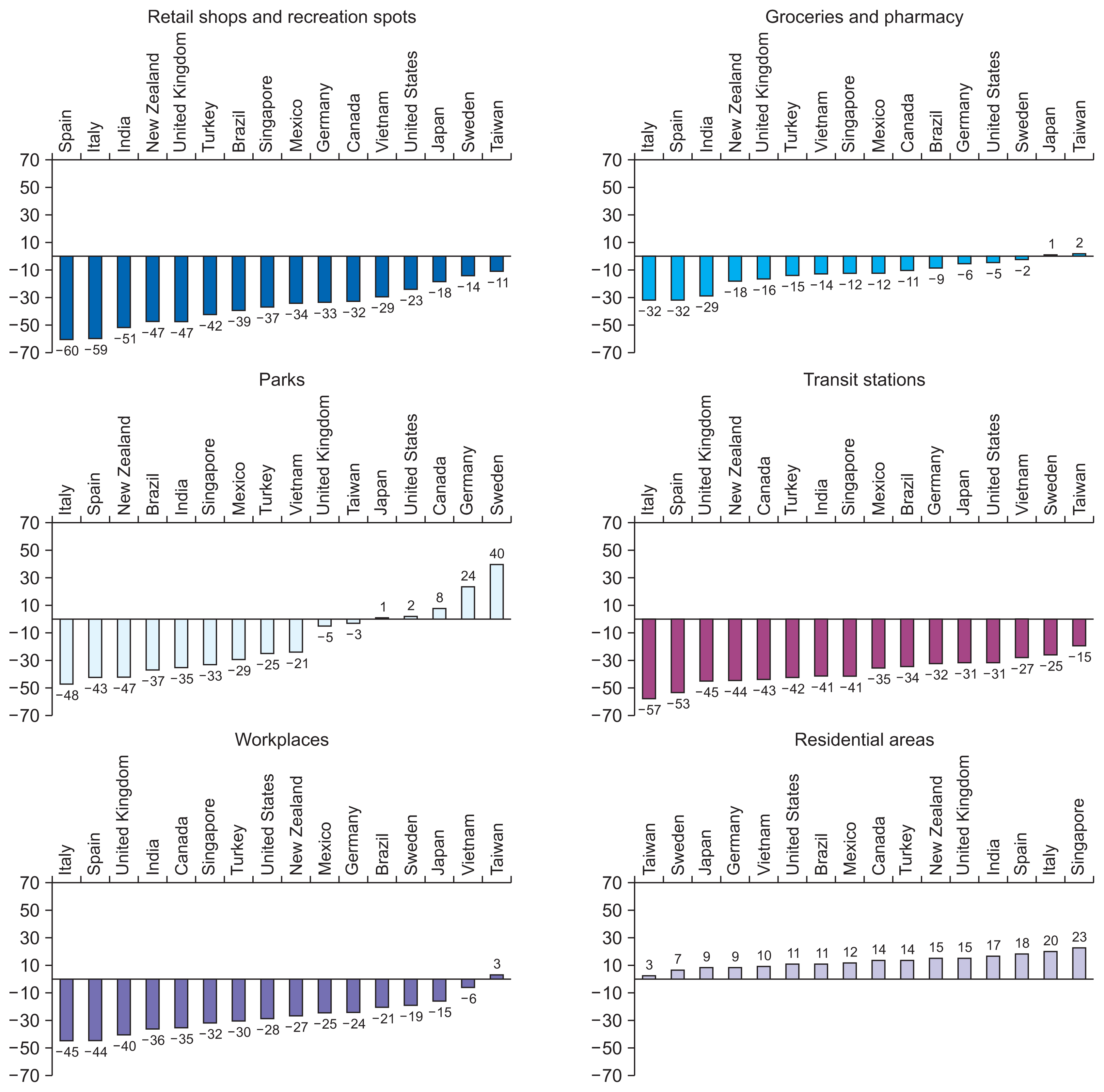
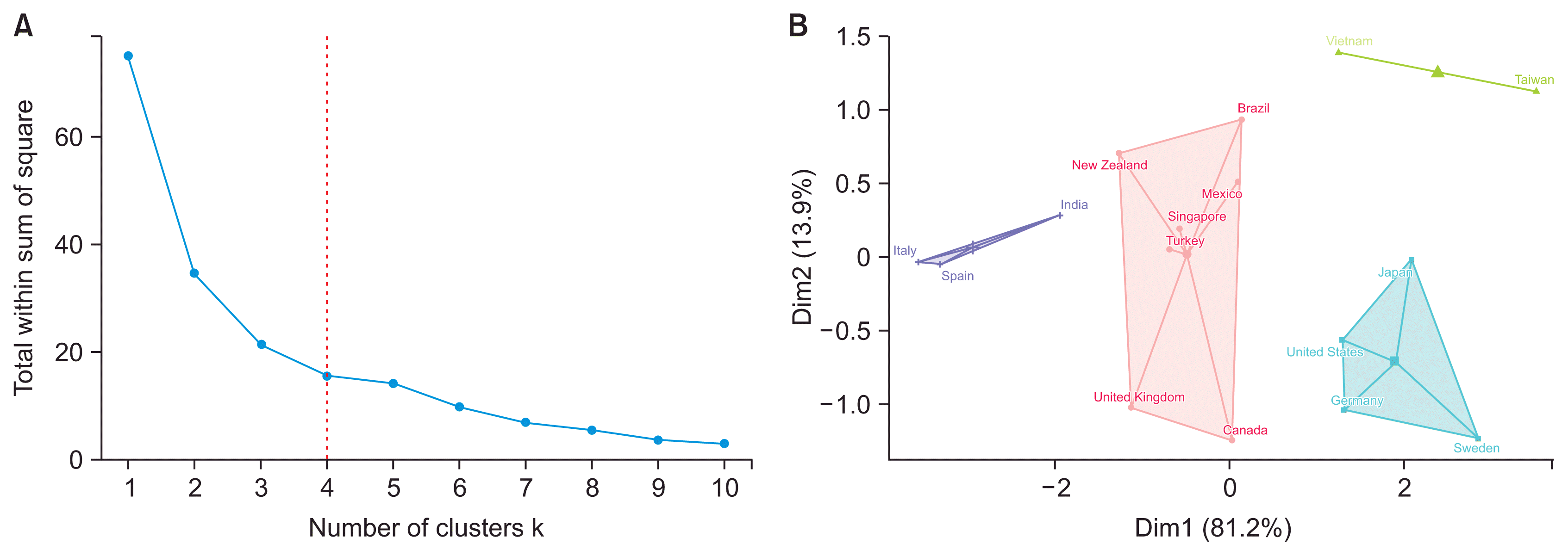
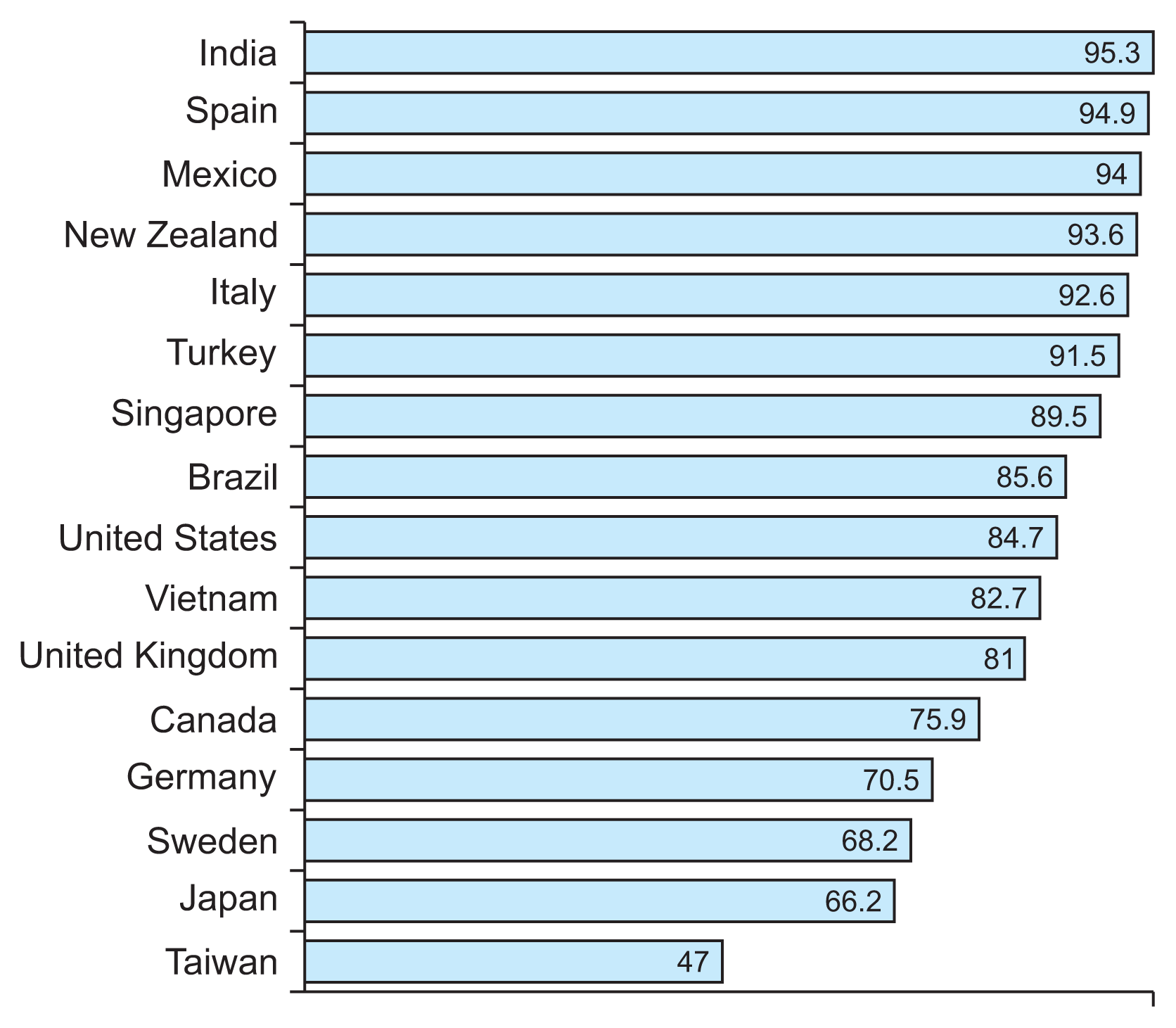
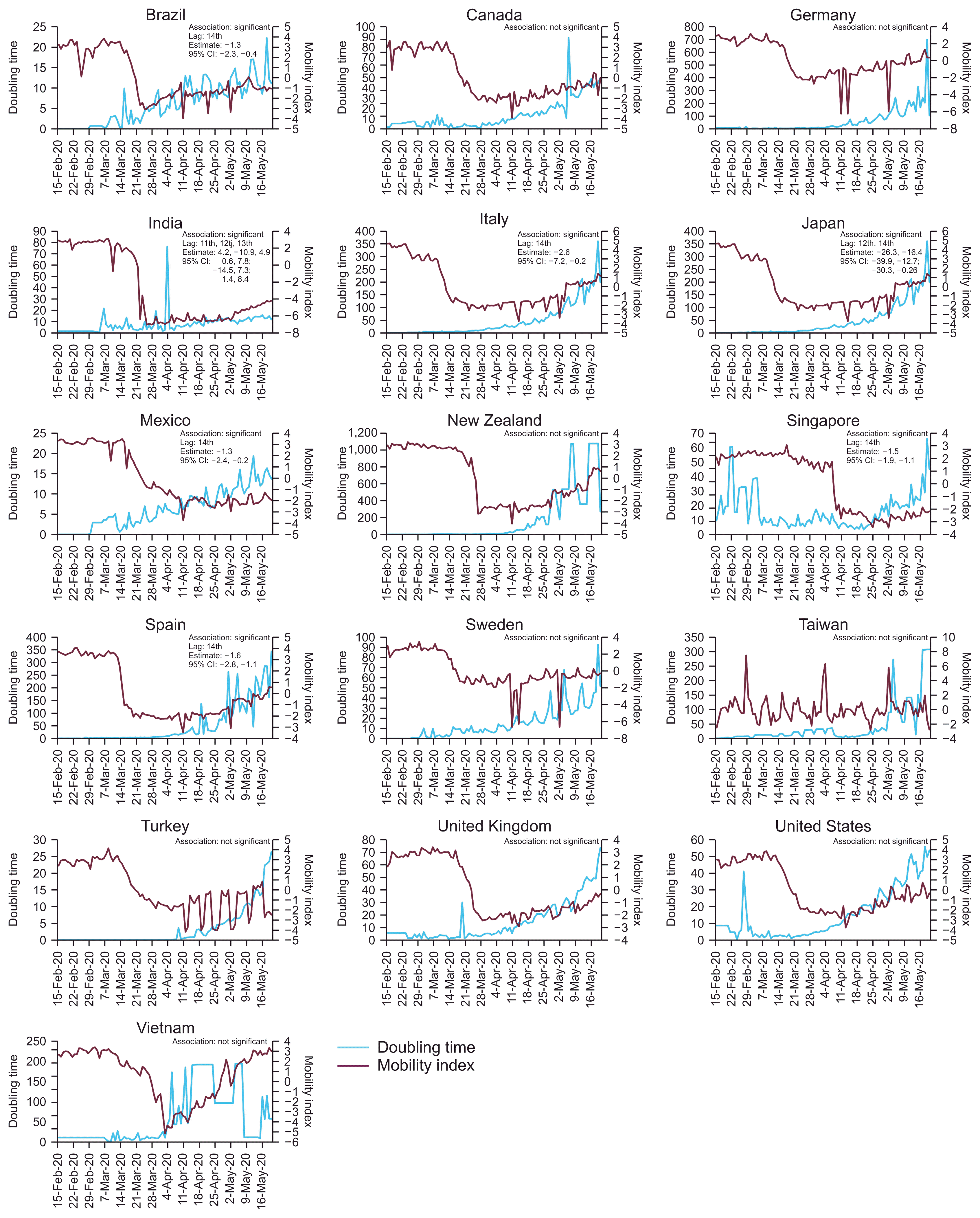
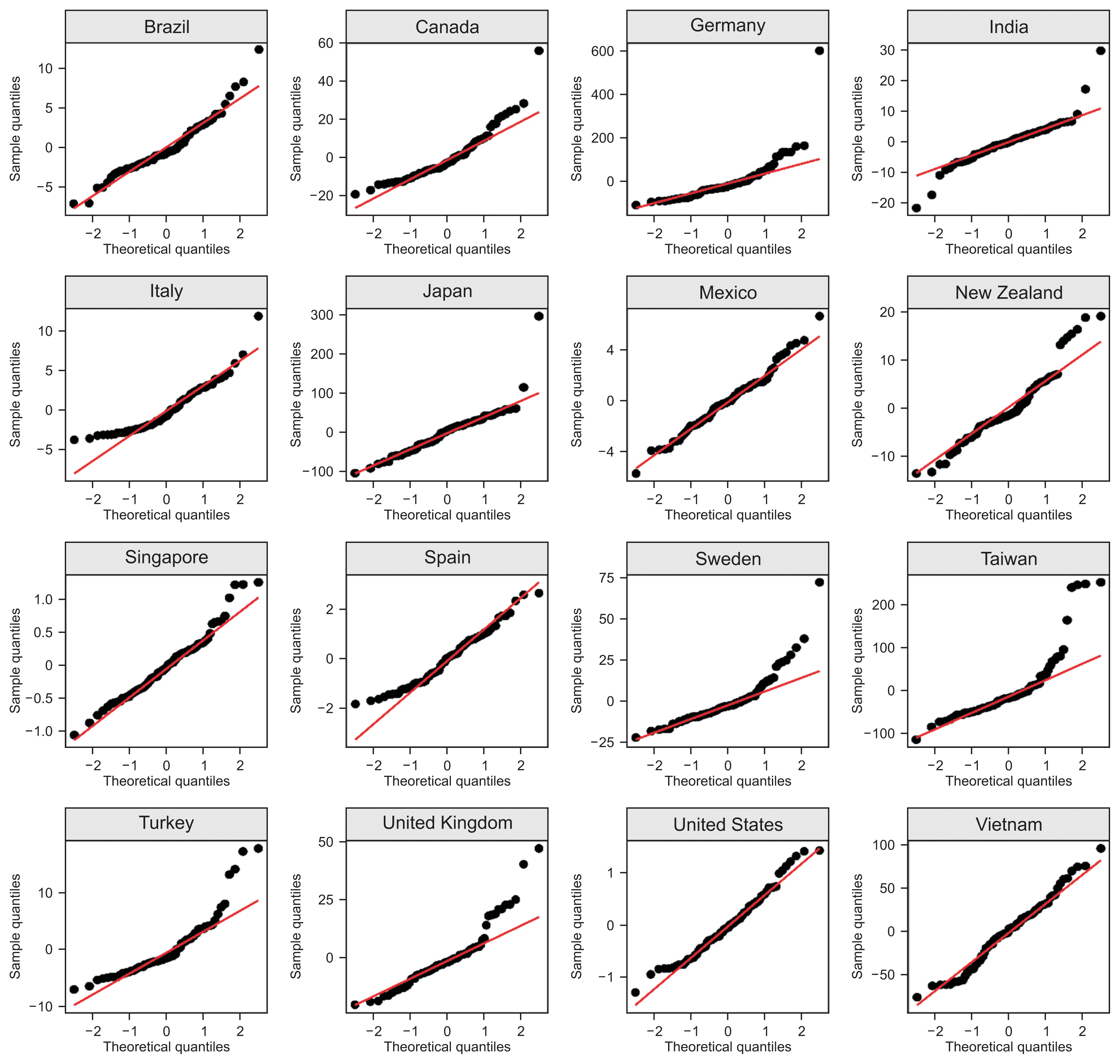
 XML Download
XML Download